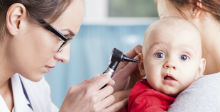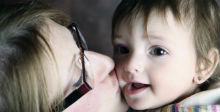Internal mini form
Contact Us Today
A musculoskeletal system is one of the most important facets of the human body. It’s also one that is most typically affected by Cerebral Palsy.
The nature and severity of a child’s brain injury are directly proportional to his or her physical functioning because certain parts of the brain affect specific parts of the body. Orthopedic health is managed through medications, surgical interventions and assistive technology to relieve symptoms and improve functionality. Moreover, therapies can help strengthen and train muscles to improve function in a way that will help support orthopedic health.
What is orthopedic health?
Cerebral Palsy is caused by an injury to the brain or abnormal brain development. Even though the injury is neurologic in nature, it produces effects to the body that are orthopedic in nature. Orthopedics is the branch of medicine that specializes in the condition of bones, ligaments, joints, tendons, muscles, and nerves. The primary orthopedic conditions most affected in Cerebral Palsy are:
- Balance
- Fine motor function
- Gross motor function
- Muscle tone
- Movement coordination and control
- Oral motor function
- Posture
- Reflexes
Cerebral Palsy affects muscles and a person’s ability to control them. Sometimes the muscles contract too much, too little, or all at the same time. Limbs can be stiff and forced into painful, awkward positions. Fluctuating muscle contractions can make limbs tremble, shake, or writhe.
Balance, posture, and coordination can also be affected by Cerebral Palsy. For some, this makes tasks such as sitting, standing, rolling or walking difficult. Others have difficulty grasping objects or tying shoes. Various forms of Cerebral Palsy can lead to posture conditions such as curvature of the spine, hip dislocation, gait-abnormalities, and other conditions involving joints and bones.
Impairment can differ from one individual to another. It can affect arms, legs, and even the face (oral motor function). It can affect one limb, several, or all. It can affect one side of the body, right or left, as well as the upper or lower torso.
Treatment plans are comprehensive
The type of movement impairment; the location and number of limbs involved; and the severity of impairment will vary, but must be taken into consideration when designing a treatment plan. Other considerations include the individual’s age, functional ability, associative conditions, pain level, previous treatments, access to treatment, and family dynamics for rehabilitation.
Treatment will likely involve an interdisciplinary team of medical specialists, including, for example, an orthotist, orthopedic surgeon, pediatrician, physical therapist, occupational therapist, and speech and language pathologist.
Treatment techniques for orthopedic concerns may include physical therapy/physiotherapy, occupational therapy, massage therapy, surgery, medications, and orthotics. About 25% of children with Cerebral Palsy are unable to move on their own and will require equipment such as motorized wheelchairs or walking aids, while another 25% experience no significant movement impairment. The remaining 50% fall somewhere in between, and may require assistive technologies or adaptive equipment.
Orthopedic treatment goals for Cerebral Palsy often include:
- achieving functional activities of daily living skills
- achieving posture stability and balance
- decreasing spasticity
- increasing muscle strength
- minimizing impairment
- minimizing joint deformity while maximizing joint functionality
- maximizing motor function
- optimizing muscle tone
- optimizing oral motor functioning to eat properly and communicate
- managing pain
- promoting self-care
Orthopedic conditions are the primary challenge in managing Cerebral Palsy. The number of impairments can affect quality of life. Identifying the conditions is the first step in optimizing the child’s health. Pain control and behavior towards treatment regimens can impact treatment success.
Common orthopedic conditions found in Cerebral Palsy include:
- Aging complications
- Ambulation
- Ankle deformity
- Ataxia
- Bone fractures
- Bone mass reduction
- Brachial plexus injury
- Contractures
- Degenerative joint disease
- Dysarthria
- Dyspraxia
- Erb’s palsy
- Foot deformity
- Fine motor function
- Fracture
- Gait disturbances
- Crouched gait
- In-toeing gait
- Out-toeing gait
- Propulsive gait
- Scissor gait
- Spastic gait
- Steppage gait
- Stiff-knee gait
- Toe-walking
- Waddling gait
- Gross motor function
- Growth impairment (muscle)
- Hip disclocation or adduction
- Hip subluxation
- Hypertonia
- Hypotonia
- Kyphosis
- Lordosis
- Motor skill impairment or dysfunction
- Movement disorders
- Musculoskeletal impairment
- Oral motor dysfunction
- Osteopenia
- Osteoporosis
- Postural control system conditions
- Repetitive use syndrome
- Scoliosis
- Spasticity
- Spine deformities
- Temporomandibular joint contractures
- Valgus deformity

Associative conditions
Cerebral Palsy affects muscle tone, gross and fine motor functions, balance, coordination, and posture. These conditions are mainly orthopedic in nature and are considered primary conditions of Cerebral Palsy. There are associative conditions, like seizures and intellectual impairment that are common in individuals with Cerebral Palsy. And, there are co-mitigating factors that co-exist with Cerebral Palsy, but are unrelated to it. Understanding conditions commonly associated with Cerebral Palsy will enhance your ability to manage your child’s unique health concerns.
Associative Conditions
Common associative conditions
Click on a condition listed below to learn more.

Assistive Technology
It’s hard to find an aspect of life that is not touched in some way by technology. For people with disabilities, technological advances offer opportunities for inclusion in every aspect of life – home, school, work, and play. Assistive technology breaks down the barriers that include activity limitations and participation restriction. These advances form the nerve center of the disability movement – equal opportunity.
About Assistive Technology
Communication-Enhancing Technology
- Augmentative and Alternative Communication
- Auditory Devices: Cochlear Implants
- Non-Verbal Communication: Eye-Tracking Technology








